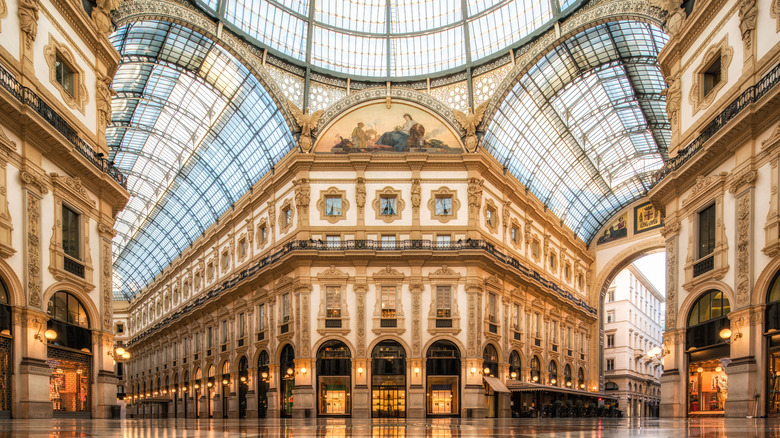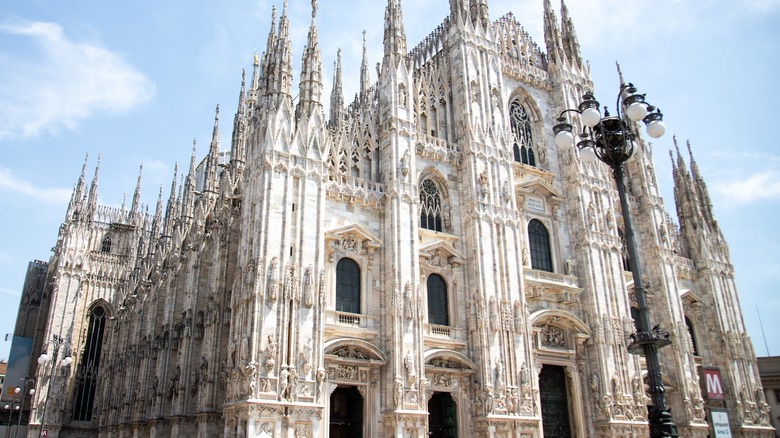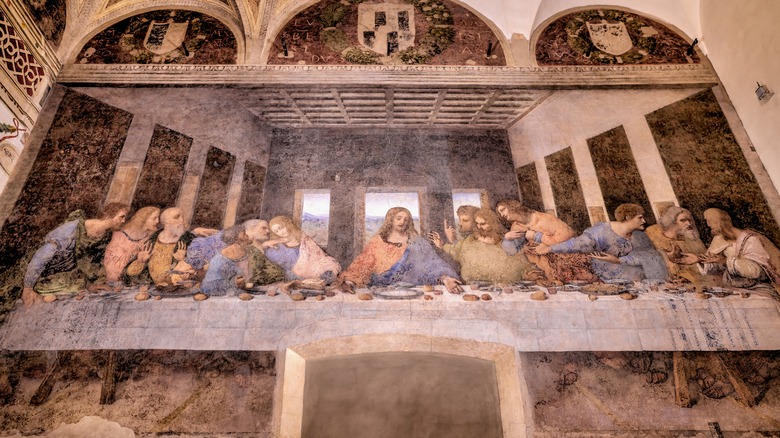This Modern Italian City Is Underrated But Has Lots To Offer, Per Rick Steves
In the fashion world, Milan, Italy, carries as much weight as London, New York, or Paris. These cities are where the big four fashion weeks are held each year, but while cosmopolitan, Milan isn't necessarily on equal footing with the other three in raw sightseeing appeal. In an article adapted from his book, "For the Love of Europe," American travel host Rick Steves opined that Milan is "overshadowed by Venice, Florence, and Rome in the minds of travelers." Milan also ranked behind Naples and Pisa as the sixth most popular Italian city in a 2023 analysis of inbound tourism trends by Vamonos-Vacanze.it (via Idealista).
For the average tourist who's more interested in well-known landmarks than high fashion, Milan might be further down the Italy bucket list than places like the Colosseum and the Sistine Chapel. Yet Steves, who knows his way around the Old World well enough to have built a travel empire around it, wrote elsewhere on his website that Milan "packs historic highlights as powerful as other Italian cities'." In the "For the Love of Europe" article, he called it "Italy's most underrated city."
The city is served by two of Italy's three busiest airports, Milan Malpensa and Milan Bergamo, so it still attracts many travelers. However, the easiest way to fly into Italy from the U.S. is through Rome's Leonardo da Vinci-Fiumicino Airport. This is the country's busiest airport, but if you want to see da Vinci's famous painting, "The Last Supper," pack your bags for Milan.
Start with Milan Cathedral (Duomo di Milano)
For where to begin in Milan, Rick Steves said, "I'd start a first visit (well, any visit) at the heart of the city: Piazza del Duomo, which is dominated by Milan's cathedral, the Duomo di Milano." Florence has one of these cathedral squares, too, so just make sure you're planning a trip to the right Piazza del Duomo. You'll know Milan's piazza by the size of its cathedral. Steves noted that it's Europe's third-largest church, but when measured by its capacity (over 40,000 people) or interior area (over 11,700 square meters), it actually comes out second on some lists.
Either way, the Duomo di Milano is Italy's biggest cathedral, since St. Peter's in Rome has no bishop and therefore qualifies as a church or "basilica," per its name. "Once you step through the entrance, you're struck by the immensity of the place," Steves continued. "The soaring ceiling is supported by sequoia-size pillars."
With the cathedral's exterior, you'll see predominantly Gothic architecture, including thousands of statues, and some gargoyles that double as drainpipes. The ornate detail outside and inside stems from a 579-year construction effort. According to tradition, the cathedral holds one of the nails used to crucify Jesus Christ. This relic only comes out once a year as part of the Rite of the Nivola in September. For Steves, the real highlight of the cavernous, pink-marble cathedral is its roof, 20 stories up, where you can enjoy the view through a "forest of spires."
The mall, the opera, and The Last Supper Museum
To build a wardrobe for your own Milan fashion show, you can walk across the cathedral square to the arch of the palatial shopping arcade, Galleria Vittorio Emanuele II. Completed in 1877, Rick Steves highlighted it as one of the world's first shopping malls, and it's where Milan's own Prada has maintained its original store since 1913. Under its twin glass roofs and central dome, other Italian luxury brands like Gucci naturally have a presence, too.
The arcade lets out across from the La Scala Opera House, or Teatro alla Scala. For Steves, the biggest draw of the adjacent opera museum is that it sometimes gives glimpses into the theater, which has hosted everything from the world premiere of "Madame Butterfly" to the performances of singers like Luciano Pavarotti. The theater also offers guided tours, and outside, even when it's the day of, you might be able to nab cheap tickets with a restricted (standing) view.
As Steves observed, you'll need to secure reservations three months beforehand to visit The Cenacolo Vinciano Museum and see Leonardo da Vinci's world-renowned fresco, "The Last Supper," in its climate-controlled room. Though it represents Christ breaking bread with his disciples for the final time, it and Steves' other recommendations could just be the starting point for a deeper exploration of Italy's second-largest city. Even coffee chains are dressed in quasi-religious splendor here, as Milan is home to one of the world's most impressive Starbucks locations.


